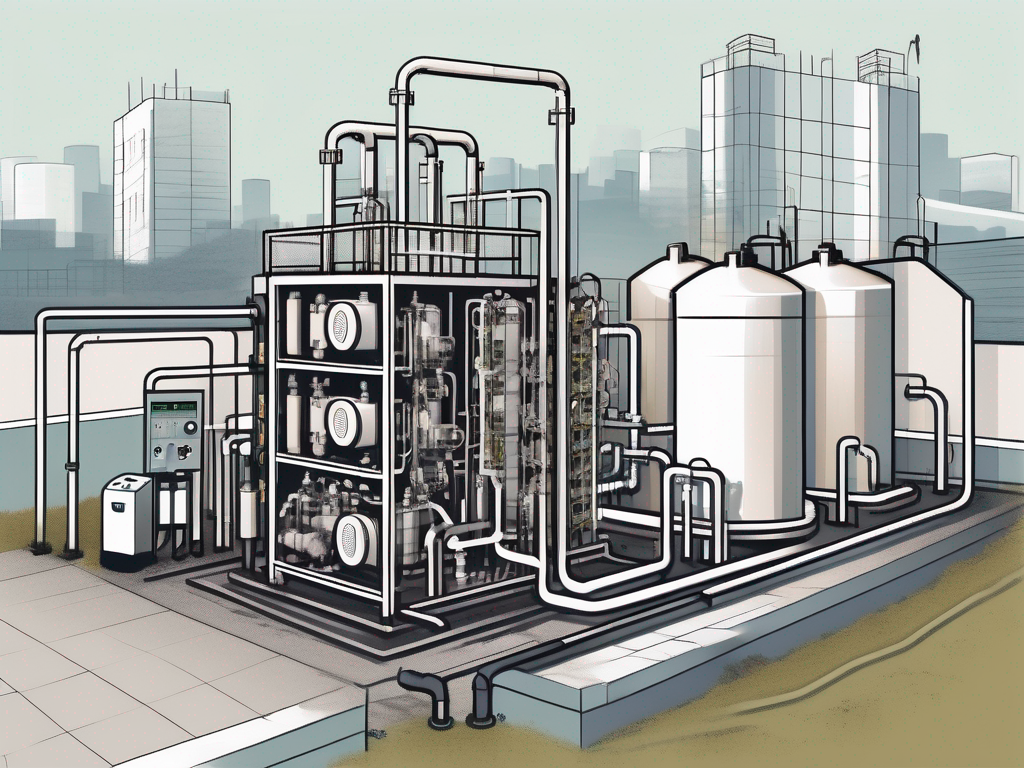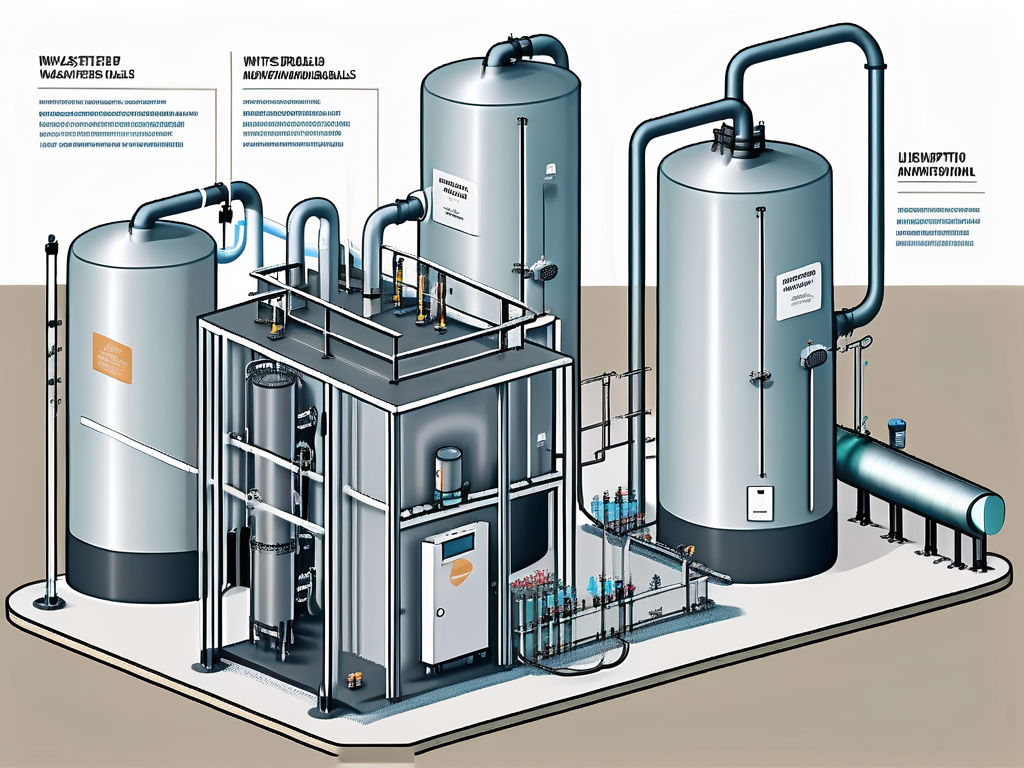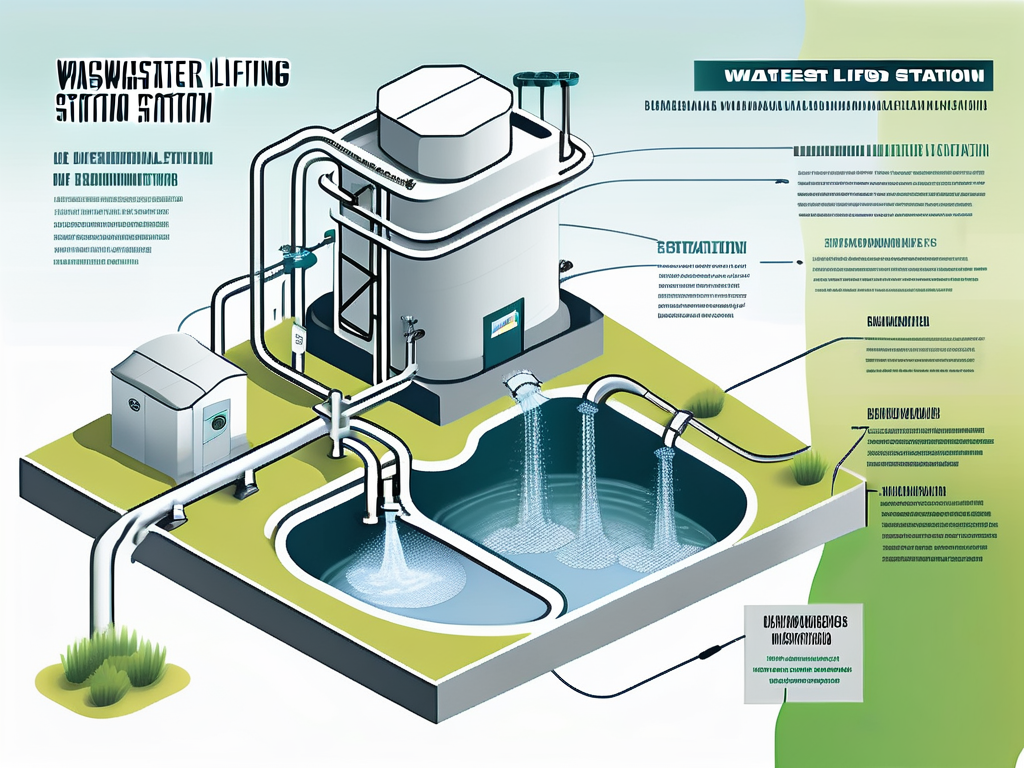
Understanding the Role and Benefits of a Wastewater Lifting Station
Wastewater handling is a crucial aspect of modern public health and environmental protection. Among the vital components in this field are wastewater lifting stations, which play a key role in the effective transportation and treatment of sewage and waste. This article explores the details surrounding wastewater lifting stations, including their definitions, functions, benefits, and future trends.
Defining a Wastewater Lifting Station
A wastewater lifting station, often referred to as a pump station, is a facility used to elevate sewage from lower to higher elevations to prevent backflow or flooding in sewer systems. It serves as a critical intermediary that siphons wastewater, directing it towards treatment facilities through underground systems when gravity alone cannot suffice.

Typically situated in low-lying areas, wastewater lifting stations incorporate pumps and associated equipment to move sewage. These installations are designed to manage varying volumes of wastewater efficiently, ensuring that the flow remains continuous, even during peak usage times. The importance of these stations cannot be overstated, as they play a vital role in urban infrastructure, helping to maintain public health and environmental safety by preventing the overflow of untreated sewage into streets and waterways.
Moreover, advancements in technology have led to the development of more energy-efficient pumps and automated systems, which not only reduce operational costs but also minimize the environmental impact. As cities expand and populations grow, the demand for reliable wastewater management systems increases, making the role of lifting stations even more critical in modern urban planning.
Key Components of a Wastewater Lifting Station
Understanding the operational efficiency of a wastewater lifting station requires familiarity with its essential components. These include:
- Pumps: These are the heart of lifting stations, specifically designed to move wastewater from one place to another.
- Wet Well: A storage chamber where wastewater collects before it’s pumped out.
- Control Panel: This controls the pumps, monitors levels, and provides communication to operators.
- Valves and Piping: Required for controlling the flow of water in and out of the station.
- Backup Systems: These ensure continued operation during power outages or equipment failures, often utilizing generators or secondary pumps.
Total system reliability hinges on the effective functioning of each component, making regular maintenance and upgrades essential. Additionally, many modern wastewater lifting stations are equipped with advanced telemetry systems that allow for remote monitoring and control, providing operators with real-time data on system performance and enabling quicker response times to any issues that may arise.
Furthermore, the integration of smart technology into these systems has revolutionized how wastewater management is approached. Predictive maintenance algorithms analyze historical performance data to forecast potential failures, allowing for proactive repairs and minimizing downtime. This not only enhances the longevity of the equipment but also ensures that the lifting stations operate at peak efficiency, ultimately benefiting the entire wastewater management process.
How a Wastewater Lifting Station Works
The operation of a wastewater lifting station is straightforward yet sophisticated. Initially, wastewater flows into the wet well, where the level of wastewater is continuously monitored by sensors. When the water reaches a predetermined level, the control panel activates one or more pumps.
The pumps then propel the collected wastewater through pipelines to the treatment facility, utilizing pressure to overcome the gravitational forces and elevation changes. Monitoring systems track performance metrics, ensuring that pumps operate efficiently and any anomalies are addressed in real-time. This dynamic process is crucial, especially during heavy rainfall or snowmelt when the volume of wastewater can surge dramatically.
Crisis-response mechanisms are built-in, enabling automatic alerts to operators in case of blockages, overflow, or mechanical failures, ensuring optimal system performance and safeguarding the surrounding environment. In addition, many stations now incorporate odor control systems to mitigate unpleasant smells that can arise from the decomposition of organic matter in wastewater. These systems often utilize biofilters or chemical scrubbers, enhancing the overall operation of the lifting station and contributing to better air quality in the vicinity.
The Crucial Role of Wastewater Lifting Stations
Wastewater lifting stations contribute enormously to the efficacy of wastewater management systems across the globe. They form a vital link between various components of the sewage treatment process, especially in urban areas where topography can pose challenges.
Wastewater Management: A Global Perspective
In many low-lying coastal cities, for instance, traditional gravity-based sewage systems may not suffice due to high water tables. Here, lifting stations become indispensable, allowing cities to effectively manage their wastewater without disrupting daily life. This is reflected in successful examples from countries around the world, where integrating lifting stations has improved the reliability and capacity of sewage systems.
Moreover, as urbanization continues to expand, particularly in developing countries, the need for efficient wastewater management solutions becomes imperative. Wastewater lifting stations help bridge the gap, ensuring equitable access to sanitation facilities as cities grow. In regions where infrastructure development is lagging, these stations can be implemented relatively quickly, providing immediate relief to communities that struggle with inadequate sanitation services. Their modular design allows for scalability, meaning that as populations increase, additional units can be added to meet rising demand without the need for extensive overhauls of existing systems.
The Impact on Public Health and Environment
The effectiveness of wastewater lifting stations directly correlates with public health outcomes. By moving sewage away from populated areas efficiently, these facilities reduce the risks of inundation and overflow, which can contribute to disease spread and environmental degradation.
Failing to manage wastewater properly can lead to disastrous consequences, including waterborne diseases, contamination of drinking water supplies, and adverse effects on local ecosystems. Therefore, implementing and maintaining lifting stations is critical to ensuring a healthy public and preserving the natural environment. Additionally, these stations often incorporate advanced technologies, such as automated monitoring systems, which can detect blockages or malfunctions in real-time, thereby minimizing downtime and ensuring continuous operation. This proactive approach not only enhances the efficiency of wastewater management but also contributes to sustainable practices by reducing the energy consumption associated with pumping and treatment processes. As cities strive to become more resilient in the face of climate change, the role of wastewater lifting stations in safeguarding public health and the environment becomes even more pronounced, highlighting their importance in modern urban infrastructure.
The Benefits of Wastewater Lifting Stations
Beyond their operational role, wastewater lifting stations offer several substantial benefits, enhancing the overall efficiency of wastewater management systems.

Enhancing Water Treatment Efficiency
By managing the flow of wastewater more effectively, lifting stations contribute to the improved efficiency of water treatment plants. They facilitate a more consistent and controllable inflow of sewage, allowing treatment processes to operate under optimal conditions.
In addition, by ensuring that wastewater is directed to treatment facilities on a timely basis, they help in minimizing retention times and the potential for odorous incidents, further contributing to better quality control in the treatment process. This consistency not only aids in maintaining the health of the treatment infrastructure but also ensures that the treated water meets the required standards for discharge or reuse, ultimately benefiting the community and environment.
Moreover, the strategic placement of lifting stations can significantly reduce the energy consumption associated with pumping wastewater over long distances. By optimizing the flow and reducing the need for extensive piping systems, these stations can lead to lower operational costs and a smaller carbon footprint for wastewater management operations. This efficiency is vital as municipalities strive to balance service delivery with environmental responsibility.
Reducing Environmental Pollution
The timely and effective pumping of wastewater minimizes the chances of overflows and spills, reducing environmental pollution significantly. Lifting stations enable the implementation of sustainable waste management practices by protecting water bodies from untreated sewage, thereby contributing to the conservation of marine ecosystems.
Furthermore, as regulations surrounding wastewater treatment become stricter globally, the reliance on properly maintained lifting stations becomes ever more critical in meeting these compliance demands, fostering a cleaner and more sustainable environment. The proactive management of wastewater not only safeguards aquatic life but also enhances public health by preventing the contamination of drinking water sources.
Additionally, lifting stations can play a pivotal role in urban planning and development. As cities expand and populations grow, the demand for efficient wastewater management becomes increasingly important. By incorporating lifting stations into the infrastructure, urban planners can ensure that even the most densely populated areas can manage their wastewater effectively, thus supporting sustainable growth and development. This foresight helps mitigate the risks associated with urban flooding and sewage overflow, creating resilient communities that can thrive despite environmental challenges.
The Future of Wastewater Lifting Stations
As technology advances, the potential for innovation within wastewater management continues to grow, paving the way for more efficient and sustainable solutions like lifting stations.
Technological Advancements in Wastewater Management
Technological breakthroughs such as IoT (Internet of Things) integration, smart sensors, and automated control systems are on the horizon. These advancements promise to enhance the monitoring and operational efficiency of wastewater lifting stations significantly.
Such technologies enable real-time data collection and analysis, allowing operators to make informed decisions rapidly and effectively manage resources. Enhanced monitoring capabilities also lead to increased reliability and reduced maintenance costs, further emphasizing the importance of adapting these innovations into standard practices.
Moreover, predictive maintenance powered by machine learning algorithms can foresee potential failures before they occur, minimizing downtime and ensuring continuous operation. This proactive approach not only saves costs but also enhances service delivery, making wastewater management more responsive to the needs of urban populations. The integration of mobile applications for operators can also facilitate remote monitoring, providing flexibility and immediate access to critical data from anywhere, thereby streamlining operations.
Sustainability and Wastewater Lifting Stations
The future of wastewater lifting stations is closely linked to sustainability. As public awareness of environmental issues grows, sustainable practices in wastewater management are becoming more prevalent.
Incorporating renewable energy sources, such as solar or wind power, into lifting stations is one way to decrease their carbon footprint. Additionally, efforts to reduce energy consumption through efficient pump design and operation can further enhance their sustainability value.
Furthermore, the adoption of green infrastructure techniques, such as utilizing biofilters and constructed wetlands alongside lifting stations, can improve water quality while promoting biodiversity. These systems not only treat wastewater but also provide habitats for various species, contributing to urban ecology. By prioritizing sustainability, wastewater lifting stations can play an integral role in larger efforts towards achieving global environmental goals, making them indispensable for future urban planning and management strategies. The synergy between technology and sustainability will undoubtedly redefine the landscape of wastewater management, ensuring that these systems are not only functional but also environmentally responsible.
